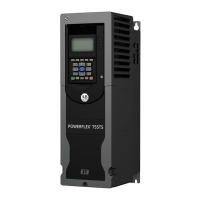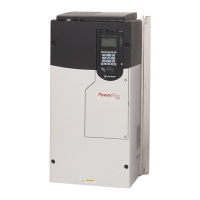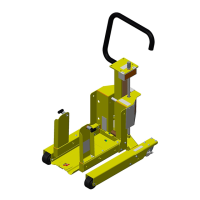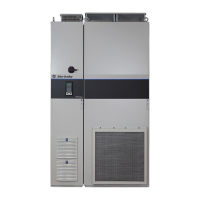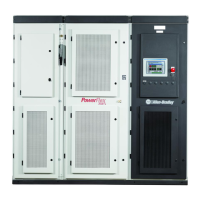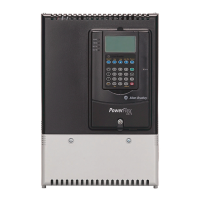Rockwell Automation Publication 750-IN119A-EN-P - April 2022 91
Chapter 6 Service and Maintenance
Solid-state Devices
High-Voltage Testing - Do not perform high-voltage insulation resistance (IR)
and dielectric withstanding voltage (DWV) tests to check solid-state control
equipment. When measuring IR or DWV of electrical equipment such as
transformers or motors, a solid-state device that is used for control or
monitoring must be disconnected before performing the test. Even though no
damage is readily apparent after an IR or DWV test, the solid-state devices are
degraded and repeated application of high voltage can lead to failure.
Locking and Interlocking Devices - Check these devices for proper working
condition and capability of performing their intended functions. Make any
necessary replacements only with Allen-Bradley renewal parts or kits. Adjust
or repair only in accordance with Allen-Bradley instructions.
Maintenance After a Fault Condition - An open short circuit protective device
(such as a fuse or circuit breaker) in a properly coordinated motor branch
circuit is an indication of a fault condition in excess of operating overload.
Such conditions can damage control equipment. Before power is restored, the
fault condition must be corrected and any necessary repairs or replacements
must be made to restore the control equipment to good working order. See
NEMA Standards Publication No. ICS-2, Part ICS2-302 for procedures. For
replacements, use only parts and devices that Rockwell Automation
recommends maintaining the integrity of the equipment. Make sure that the
parts are properly matched to the model, series, and revision level of the
equipment.
Final Check Out - After maintenance or repair of industrial controls, always
test the control system for proper function under controlled conditions to
avoid a control malfunction hazard. For additional information, see NEMA
ICS 1.3, PREVENTIVE MAINTENANCE OF INDUSTRIAL CONTROL AND
SYSTEMS EQUIPMENT, published by the National Electrical Manufacturers
Association, and NFPA 70B, ELECTRICAL EQUIPMENT MAINTENANCE,
published by the National Fire Protection Association.
ATTENTION: Use of other than factory-recommended test equipment for
solidstate controls can result in damage to the control or test equipment or
unintended actuation of the controlled equipment. See paragraph titled HIGH
VOLTAGE TESTING.
Solid-state devices require little more than a periodic visual inspection.
Discolored, charred, or burned components can indicate the need to replace
the component or circuit board. Make necessary replacements only at the
circuit board or plug-in component level. Inspect printed circuit boards to
determine whether they are properly seated in the edge board connectors.
Board locking tabs must also be in place. Solid-state devices must also be
protected from contamination, and temperature control provisions must be
maintained - refer to paragraphs titled CONTAMINATION and COOLING
DEVICES. Do not use solvents on printed circuit boards.
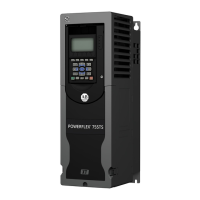
